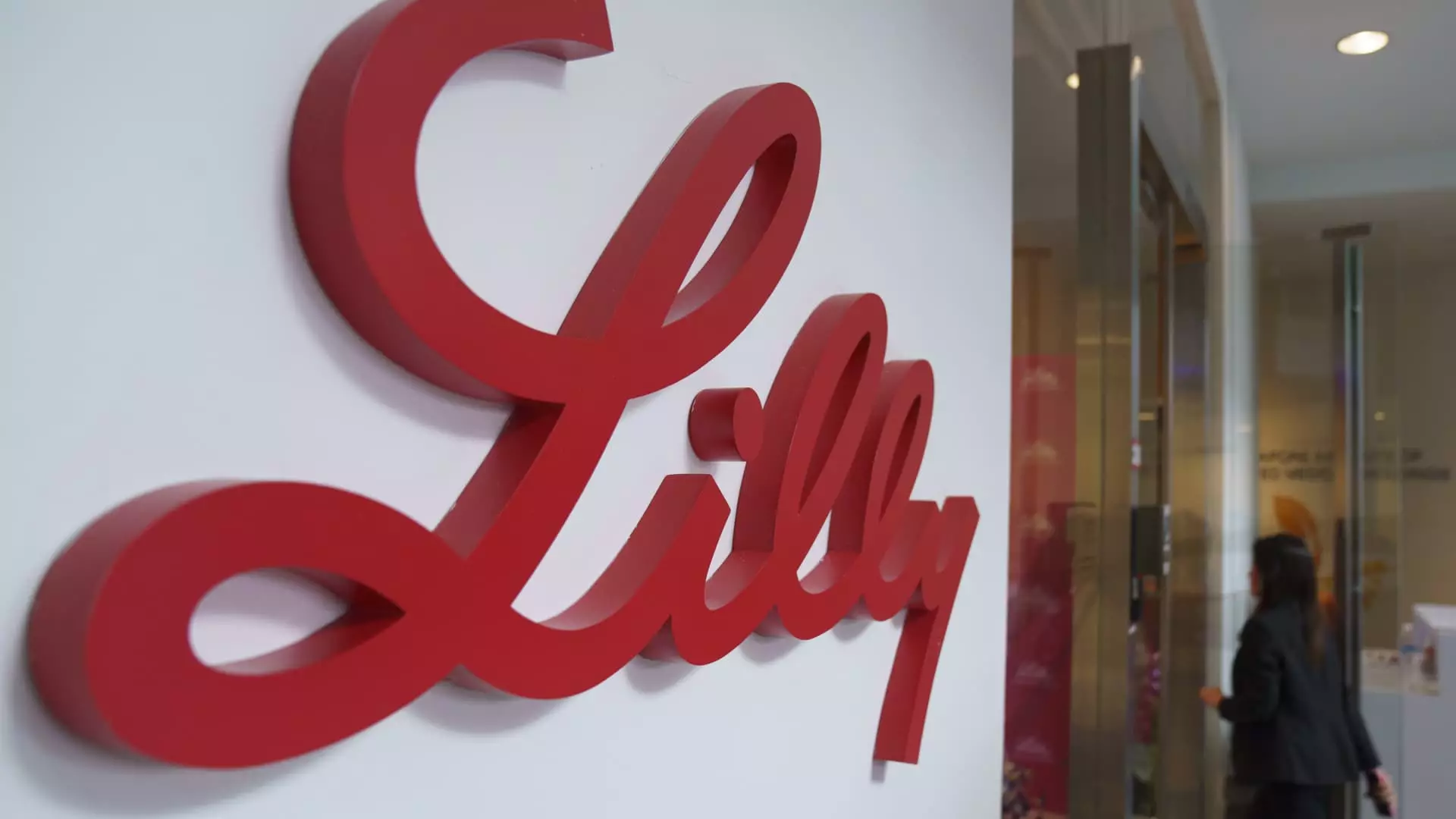Eli Lilly’s recent announcement regarding its revised revenue guidance has sent ripples through the stock market, reflecting a significant recalibration of expectations for the company’s financial trajectory. On Tuesday, the pharmaceutical giant lowered its full-year 2024 revenue forecast to approximately $45 billion, a modest reduction from its previous estimate of $45.4 billion to $46 billion. This adjustment, while still representing a remarkable 32% increase from the prior year’s figures, signals potential underlying challenges for the company in meeting the heightened demand for its diabetes and weight loss medications. Investors responded with caution, evidenced by a more than 7% drop in Eli Lilly’s stock price during midday trading, highlighting the market’s sensitivity to changes in projected earnings.
In light of soaring interest in its incretin drugs Mounjaro and Zepbound, Eli Lilly has been actively investing to expand its manufacturing capabilities. The company has committed substantial resources to address the escalating demand for these medications, known for their effectiveness in treating diabetes and facilitating weight loss. Notably, the Food and Drug Administration declared the U.S. shortage of tirzepatide—the drug’s key ingredient—addressed, granting Eli Lilly a renewed sense of direction in its production efforts. CEO Dave Ricks expressed optimism in a recent CNBC interview, stating that “tons of supply are coming online,” suggesting that the company anticipates sustained growth in the sector moving forward.
However, these optimistic projections are tempered by a slowdown in sales acceleration, which Ricks attributes to lower-than-expected channel inventory and a deviation from previously anticipated growth rates. Eli Lilly’s forecast for fourth-quarter revenue stands at $13.5 billion, with substantial contributions of $3.5 billion from Mounjaro and $1.9 billion from Zepbound. Analysts were expecting even higher figures, indicating that the company faces stiff competition in the burgeoning market for obesity and diabetes treatments.
The landscape in which Eli Lilly operates is increasingly competitive, with formidable players like Novo Nordisk also vying for market share within this lucrative niche. The ongoing race for dominance has prompted Eli Lilly to innovate further, as evidenced by its ongoing efforts to develop a user-friendly obesity pill aimed at streamlining treatment for patients. Ricks has hinted at potential approval for this new drug in the upcoming year, which could pave the way for expanded market reach and solidify the company’s reputation for pioneering in diabetes care.
Eli Lilly’s future revenue outlook remains bright, with anticipated sales for fiscal 2025 projected to range between $58 billion and $61 billion. However, the success of these projections hinges on overcoming manufacturing hurdles and navigating a rapidly evolving market. As the company strives to recalibrate its operational strategies and adapt to the fluctuating demands of consumers, it must also keep a vigilant eye on its competitors who are equally determined to capture a share of this profitable market. The coming months will be critical for Eli Lilly as it works to realign its production capabilities while seizing growth opportunities in a challenging environment.



Leave a Reply